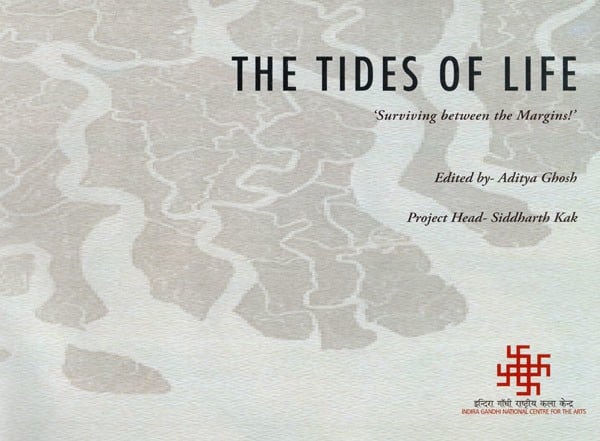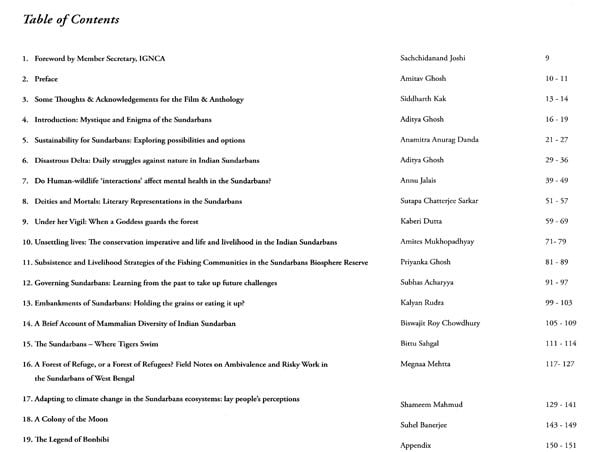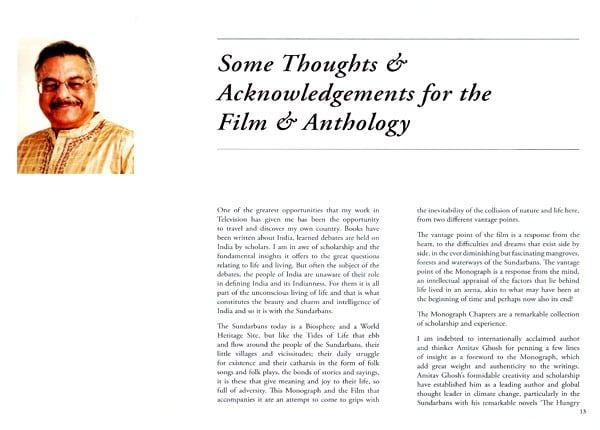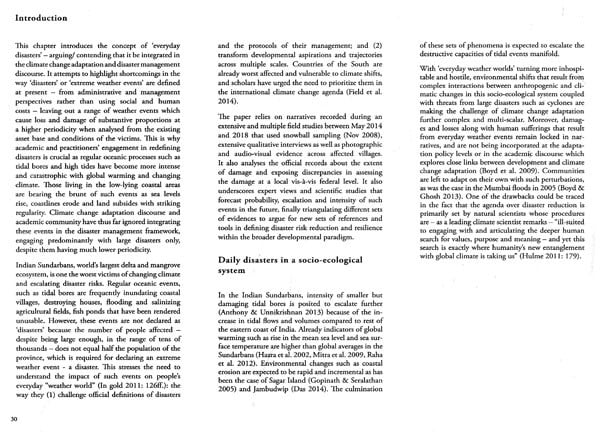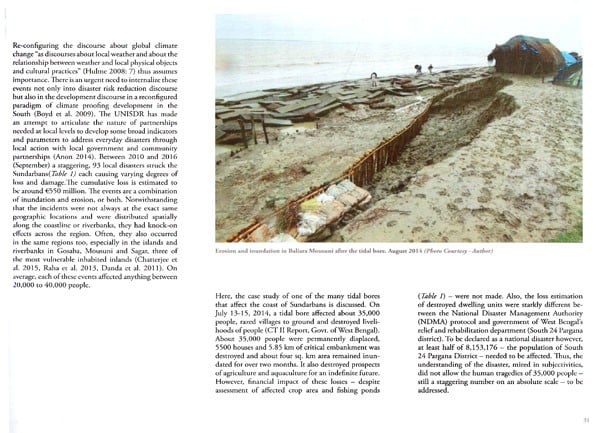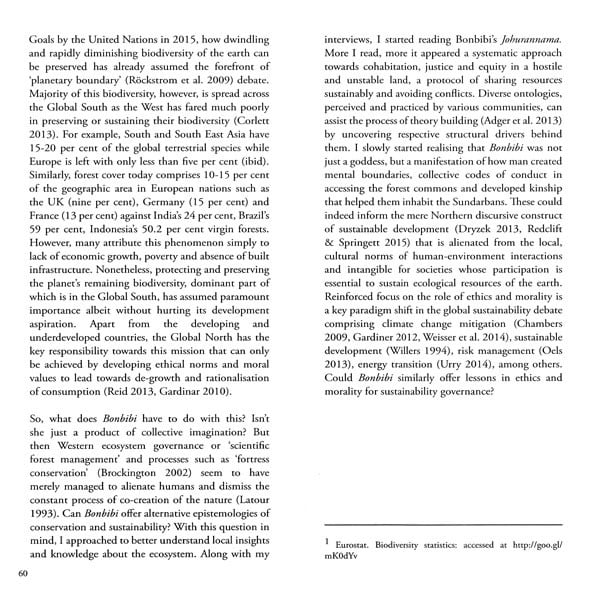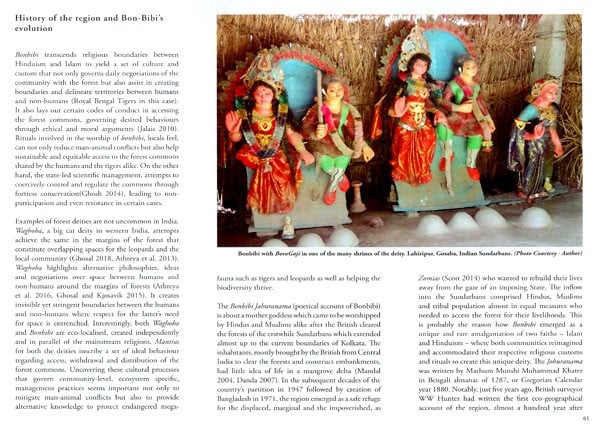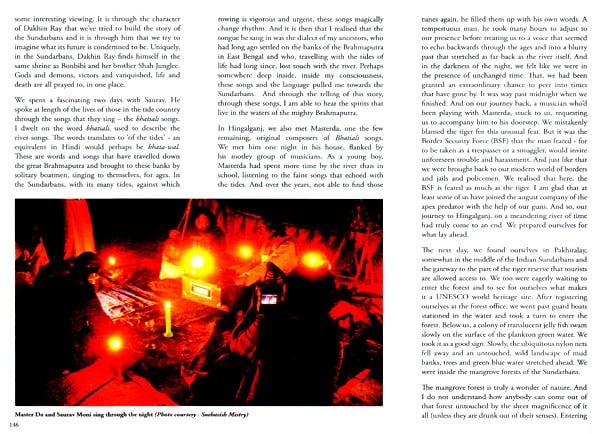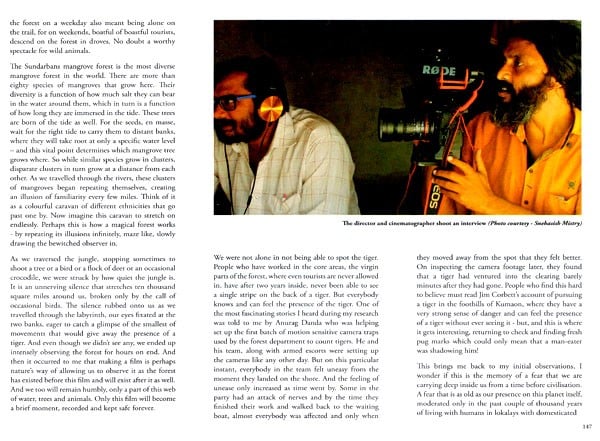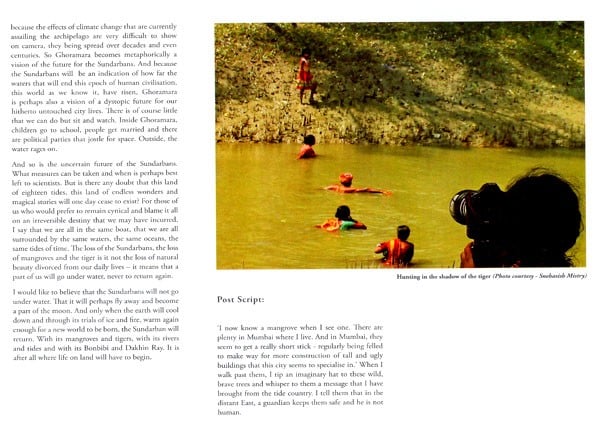
The Tides of Life 'Surviving Between the Margins!'
Book Specification
| Item Code: | UAT626 |
| Author: | Aditya Ghosh |
| Publisher: | Indira Gandhi National Centre for the Arts |
| Language: | English |
| Edition: | 2019 |
| ISBN: | 9788194222415 |
| Pages: | 151 (Throughout Color Illustrations) |
| Cover: | HARDCOVER |
| Other Details | 12.00 X 9.00 inch |
| Weight | 900 gm |
Book Description
It is a unique volume on an inimitably fascinating landscape-the Sundarbans. The largest mangrove ecosystem in the world with highest species diversity that includes the iconic Royal Bengal Tiger-this sprawling marvel of nature is a UNESCO biodiversity heritage site. A living theatre of human civilisation, the region has witnessed human desperation, existential struggles, revolutions and bloodshed since time immemorial. To do justice to the intellectual breadth that the region invokes, a diverse range of expositions-academic research, personal encounters, field notebooks, films & photographs make it a unique collection.
An Indian myth says that when the river Ganges first descended from the heavens the force of the cascade was so great that the earth would have been destroyed but for the intervention of the god Shiva, who tamed the torrent by catching it in his matted dreadlocks. On a map, those bindings seem to hold almost until the very end of the river's journey: it is only when the Ganges approaches the Bay of Bengal that it springs free of its fetters, separating into hundreds, maybe thousands of wandering strands. The result is the Sundarbans, an immense stretch of mangrove forest that links the floodplains of two of the world's greatest rivers, the Ganges and the Brahmaputra - a vast, half-drowned land where the waters of the Himalayas merge with the incoming tides of the sea.
The Sundarbans are in fact a vast archipelago of islands, created by the great cargo of silt which the Ganges and the Brahmaputra gouge from the earth as they make their descent to the sea. Through the medium of this silt the rivers restore to the earth what they have taken from it, but in such a form as to assert their permanent dominion over their gift. The rivers' channels are spread across the land like a fine-mesh net, creating a terrain where the boundaries between land and water are always changing, never stable. Some channels are mighty rivers, so wide across that one shore is invisible from the other; others are no more than the breadth of two outstretched arms. Yet, each of these channels is a 'river' in its own right, each possessed of its own, often strangely evocative name - the 'Matla' (the 'Maddened One'); the 'Jahajphoron' (the 'Ship-Breaker'); the 'Saptamukhi (the Seven-stranded One). When the channels meet, it is often in clusters of four, five, or even six: in Bangla these confluences are designated by a beautiful word - mohana.
In the Sundarbans there are no clear dividing lines between freshwater and salt, river and sea. The tides reach more than a hundred miles inland and every day thousands of hectares of forest disappear underwater only to re-emerge hours later. At certain times of the year the sea rushes into the Sundarbans at such a pace that the tides form 'bores' ten- to thirty foot high waves that sweep tsunami-like through the channels. The currents are so powerful as to reshape the islands almost daily - some days the water tears away entire promontories and peninsulas; other days it throws up new shelves and sand banks where there were none before. When new land appears, colonies of mangroves begin to gestate almost immediately. As a genus, mangroves have evolved certain specialized features stilt roots called pneumatophores and salt excreting glands, for example that allow its members to flourish in this terrain. Many mangrove species propagate through seedlings called with pointed shoots that thrust like spears through the mud: every sandbank in the Sundarbans is dotted with thousands of these shoots. So prolifically do mangroves propagate that an entire forest can regenerate itself within a few years.
The present study on the Sundarbans has been carried out in the Janapada Sampada Division of the IGNCA under its research programme on Cultural Dimensions of Ecology and Resource Management.
Several other studies of similar nature have been conducted under this programme, with an objective to offer alternate paradigms for maintenance of bio cultural diversity and sustainable development. Traditional Resource Management by Madhav Gadgil, Symbiotic Relationship between Man, Animal and Nature by R. S. Negi, Sacred Groves and Sacred Trees by Subash Chandran, Island Ecology and Cultural Perceptions of Lakshadweep by Makhan Jha, The Mukkuvar: A Fishing Community by G. John Samuel and Ecological and Socio-cultural Landscape of the Gaddis by Molly Kaushal are some of the important studies that have been carried out in the past. At present, a major study on Paddy Growing Cultures is being conducted in collaboration with various Universites and Research Institutions across India.
Sundarbans, literally the beautiful forest, is a UNESCO World Heritage site, home to one of the largest mangrove forests in the world. It covers approximately 10,000 square kilometers, of which about 4000 square kilometers is in India. Formed at the delta of the Ganga, Brahmaputra and Meghna, the Sundarbans extends to the Bay of Bengal. Over four million people live here. It is home to the endangered Royal Bengal Tiger, one of the only species of tiger to live in a mangrove forest. Thousands of people negotiate this forest every day, its delta, rivers, streams and complex network of channels on boats, live on its small islands and make a living out of the water and wilderness that surrounds them, inhabited by hundreds of varieties of birds, fish, crabs, crocodiles, lizards and snakes.
Just as the roots of the mangrove forests in the Sundarbans appear to weave the delta together, 'The Tides of Life' is an idea to weave together an anthology and a film harmonising their creative and intellectual insights and synergies. The tides in the Sundarbans continue to rise, constantly eroding the margins of land and livelihood. The Sundarbans is a culture and ecology under threat and the film and this anthology are important attempts to document a culture and geography in transition.
We are indebted to acclaimed novelist Amitav Ghosh who has written vividly and with great power about the Sundarbans for contributing a valuable preface to this Anthology.
**Contents and Sample Pages**
